K. F. Riley, M. P. Hobson, S. J. Bence0521679710, 9780521679718, 0521861535, 9780521861533
Table of contents :
Cover Page……Page 1
Mathematical Methods for Physics and Engineering……Page 3
Title Page……Page 5
ISBN 0521861535……Page 6
2 Preliminary calculus……Page 7
4 Series and limits……Page 8
7 Vector algebra……Page 9
9 Normal modes……Page 10
12 Fourier series……Page 11
15 Higher-order ordinary differential equations……Page 12
18 Special functions……Page 13
21 Partial differential equations: separation of variables and other methods……Page 14
24 Complex variables……Page 15
26 Tensors……Page 16
29 Representation theory……Page 17
30 Probability……Page 18
31 Statistics……Page 19
Preface to the third edition……Page 22
Preface to the second edition……Page 25
Preface to the first edition……Page 27
1.1.1 Polynomials and polynomial equations……Page 31
1.1.2 Factorising polynomials……Page 37
1.1.3 Properties of roots……Page 39
1.2.1 Single-angle identities……Page 40
1.2.2 Compound-angle identities……Page 41
1.2.3 Double- and half-angle identities……Page 43
1.3 Coordinate geometry……Page 45
1.4 Partial fractions……Page 48
1.4.1 Complications and special cases……Page 51
1.5 Binomial expansion……Page 55
1.5.2 Proof of the binomial expansion……Page 56
1.6.1 Identities involving binomial coefficients……Page 57
1.6.2 Negative and non-integral values of……Page 59
1.7 Some particular methods of proof……Page 60
1.7.1 Proof by induction……Page 61
1.7.2 Proof by contradiction……Page 62
1.7.3 Necessary and sufficient conditions……Page 64
1.8 Exercises……Page 66
1.9 Hints and answers……Page 69
2.1.1 Differentiation from first principles……Page 71
2.1.2 Differentiation of products……Page 74
2.1.3 The chain rule……Page 76
2.1.5 Implicit differentiation……Page 77
2.1.7 Leibnitz’ theorem……Page 78
2.1.8 Special points of a function……Page 80
2.1.9 Curvature of a function……Page 82
2.1.10 Theorems of differentiation……Page 85
2.2.1 Integration from first principles……Page 89
2.2.2 Integration as the inverse of differentiation……Page 91
2.2.3 Integration by inspection……Page 92
2.2.4 Integration of sinusoidal functions……Page 93
2.2.6 Integration using partial fractions……Page 94
2.2.7 Integration by substitution……Page 95
2.2.8 Integration by parts……Page 97
2.2.9 Reduction formulae……Page 99
2.2.11 Integration in plane polar coordinates……Page 100
2.2.13 Applications of integration……Page 102
2.3 Exercises……Page 106
2.4 Hints and answers……Page 111
3.1 The need for complex numbers……Page 113
3.2.1 Addition and subtraction……Page 115
3.2.2 Modulus and argument……Page 117
3.2.3 Multiplication……Page 118
3.2.4 Complex conjugate……Page 119
3.2.5 Division……Page 121
3.3 Polar representation of complex numbers……Page 122
3.3.1 Multiplication and division in polar form……Page 124
3.4.1 Trigonometric identities……Page 125
3.4.2 Finding the nth roots of unity……Page 127
3.4.3 Solving polynomial equations……Page 128
3.5 Complex logarithms and complex powers……Page 129
3.6 Applications to differentiation and integration……Page 131
3.7.2 Hyperbolic–trigonometric analogies……Page 132
3.7.3 Identities of hyperbolic functions……Page 134
3.7.5 Inverses of hyperbolic functions……Page 135
3.7.6 Calculus of hyperbolic functions……Page 136
3.8 Exercises……Page 139
3.9 Hints and answers……Page 143
4.1 Series……Page 145
4.2 Summation of series……Page 146
4.2.2 Geometric series……Page 147
4.2.3 Arithmetico-geometric series……Page 148
4.2.4 The difference method……Page 149
4.2.5 Series involving natural numbers……Page 151
4.2.6 Transformation of series……Page 152
4.3.1 Absolute and conditional convergence……Page 154
4.3.2 Convergence of a series containing only real positive terms……Page 155
4.3.3 Alternating series test……Page 160
4.5 Power series……Page 161
4.5.1 Convergence of power series……Page 162
4.5.2 Operations with power series……Page 164
4.6.1 Taylor’s theorem……Page 166
4.6.2 Approximation errors in Taylor series……Page 169
4.6.3 Standard Maclaurin series……Page 170
4.7 Evaluation of limits……Page 171
4.8 Exercises……Page 174
4.9 Hints and answers……Page 179
5.1 Definition of the partial derivative……Page 181
5.2 The total differential and total derivative……Page 183
5.3 Exact and inexact differentials……Page 185
5.5 The chain rule……Page 187
5.6 Change of variables……Page 188
5.7 Taylor’s theorem for many-variable functions……Page 190
5.8 Stationary values of many-variable functions……Page 192
5.9 Stationary values under constraints……Page 197
5.10 Envelopes……Page 203
5.10.1 Envelope equations……Page 204
5.11 Thermodynamic relations……Page 206
5.12 Differentiation of integrals……Page 208
5.13 Exercises……Page 209
5.14 Hints and answers……Page 215
6.1 Double integrals……Page 217
6.2 Triple integrals……Page 220
6.3.1 Areas and volumes……Page 221
6.3.2 Masses, centres of mass and centroids……Page 223
6.3.3 Pappus’ theorems……Page 225
6.3.4 Moments of inertia……Page 228
6.4 Change of variables in multiple integrals……Page 229
6.4.1 Change of variables in double integrals……Page 230
6.4.2 Evaluation of the integral……Page 232
6.4.3 Change of variables in triple integrals……Page 234
6.4.4 General properties of Jacobians……Page 236
6.5 Exercises……Page 237
6.6 Hints and answers……Page 241
7.1 Scalars and vectors……Page 242
7.2 Addition and subtraction of vectors……Page 243
7.3 Multiplication by a scalar……Page 244
7.4 Basis vectors and components……Page 247
7.5 Magnitude of a vector……Page 248
7.6.1 Scalar product……Page 249
7.6.2 Vector product……Page 252
7.6.3 Scalar triple product……Page 254
7.7.1 Equation of a line……Page 256
7.7.2 Equation of a plane……Page 257
7.7.3 Equation of a sphere……Page 258
7.8.1 Distance from a point to a line……Page 259
7.8.2 Distance from a point to a plane……Page 260
7.8.3 Distance from a line to a line……Page 261
7.8.4 Distance from a line to a plane……Page 262
7.9 Reciprocal vectors……Page 263
7.10 Exercises……Page 264
7.11 Hints and answers……Page 270
8 Matrices and vector spaces……Page 271
8.1 Vector spaces……Page 272
8.1.1 Basis vectors……Page 273
8.1.2 The inner product……Page 274
8.1.3 Some useful inequalities……Page 276
8.2 Linear operators……Page 277
8.3 Matrices……Page 279
8.4 Basic matrix algebra……Page 280
8.4.1 Matrix addition and multiplication by a scalar……Page 281
8.4.2 Multiplication of matrices……Page 282
8.4.3 The null and identity matrices……Page 284
8.6 The transpose of a matrix……Page 285
8.7 The complex and Hermitian conjugates of a matrix……Page 286
8.8 The trace of a matrix……Page 288
8.9 The determinant of a matrix……Page 289
8.9.1 Properties of determinants……Page 291
8.10 The inverse of a matrix……Page 293
8.11 The rank of a matrix……Page 297
8.12.1 Diagonal matrices……Page 298
8.12.2 Lower and upper triangular matrices……Page 299
8.12.4 Orthogonal matrices……Page 300
8.12.6 Unitary matrices……Page 301
8.13 Eigenvectors and eigenvalues……Page 302
8.13.1 Eigenvectors and eigenvalues of a normal matrix……Page 303
8.13.2 Eigenvectors and eigenvalues of Hermitian and anti-Hermitian matrices……Page 306
8.13.5 Simultaneous eigenvectors……Page 308
8.14 Determination of eigenvalues and eigenvectors……Page 310
8.14.1 Degenerate eigenvalues……Page 311
8.15 Change of basis and similarity transformations……Page 312
8.16 Diagonalisation of matrices……Page 315
8.17 Quadratic and Hermitian forms……Page 318
8.17.1 The stationary properties of the eigenvectors……Page 320
8.18 Simultaneous linear equations……Page 322
8.18.1 The range and null space of a matrix……Page 323
8.18.2 N simultaneous linear equations in N unknowns……Page 325
8.18.3 Singular value decomposition……Page 331
8.19 Exercises……Page 337
8.20 Hints and answers……Page 344
9 Normal modes……Page 346
9.1 Typical oscillatory systems……Page 347
9.2 Symmetry and normal modes……Page 352
9.3 Rayleigh–Ritz method……Page 357
9.4 Exercises……Page 359
9.5 Hints and answers……Page 362
10.1 Differentiation of vectors……Page 364
10.1.1 Differentiation of composite vector expressions……Page 367
10.1.2 Differential of a vector……Page 368
10.2 Integration of vectors……Page 369
10.3 Space curves……Page 370
10.4 Vector functions of several arguments……Page 374
10.5 Surfaces……Page 375
10.7 Vector operators……Page 377
10.7.1 Gradient of a scalar field……Page 378
10.7.2 Divergence of a vector field……Page 382
10.7.3 Curl of a vector field……Page 383
10.8.1 Vector operators acting on sums and products……Page 384
10.8.2 Combinations of grad, div and curl……Page 385
10.9.1 Cylindrical polar coordinates……Page 387
10.9.2 Spherical polar coordinates……Page 391
10.10 General curvilinear coordinates……Page 394
10.11 Exercises……Page 399
10.12 Hints and answers……Page 405
11.1 Line integrals……Page 407
11.1.1 Evaluating line integrals……Page 408
11.1.2 Physical examples of line integrals……Page 411
11.1.3 Line integrals with respect to a scalar……Page 412
11.2 Connectivity of regions……Page 413
11.3 Green’s theorem in a plane……Page 414
11.4 Conservative fields and potentials……Page 417
11.5 Surface integrals……Page 419
11.5.1 Evaluating surface integrals……Page 421
11.5.2 Vector areas of surfaces……Page 423
11.5.3 Physical examples of surface integrals……Page 425
11.6 Volume integrals……Page 426
11.6.1 Volumes of three-dimensional regions……Page 427
11.7 Integral forms for grad, div and curl……Page 428
11.8 Divergence theorem and related theorems……Page 431
11.8.1 Green’s theorems……Page 432
11.8.2 Other related integral theorems……Page 433
11.8.3 Physical applications of the divergence theorem……Page 434
11.9 Stokes’ theorem and related theorems……Page 436
11.9.1 Related integral theorems……Page 437
11.9.2 Physical applications of Stokes’ theorem……Page 438
11.10 Exercises……Page 439
11.11 Hints and answers……Page 444
12.1 The Dirichlet conditions……Page 445
12.2 The Fourier coefficients……Page 447
12.3 Symmetry considerations……Page 449
12.4 Discontinuous functions……Page 450
12.5 Non-periodic functions……Page 452
12.7 Complex Fourier series……Page 454
12.8 Parseval’s theorem……Page 456
12.9 Exercises……Page 457
12.10 Hints and answers……Page 461
13.1 Fourier transforms……Page 463
13.1.1 The uncertainty principle……Page 465
13.1.2 Fraunhofer diffraction……Page 467
13.1.3 The Dirac δ-function……Page 469
13.1.4 Relation of the δ-function to Fourier transforms……Page 472
13.1.5 Properties of Fourier transforms……Page 473
13.1.6 Odd and even functions……Page 475
13.1.7 Convolution and deconvolution……Page 476
13.1.8 Correlation functions and energy spectra……Page 479
13.1.9 Parseval’s theorem……Page 480
13.1.10 Fourier transforms in higher dimensions……Page 481
13.2 Laplace transforms……Page 483
13.2.1 Laplace transforms of derivatives and integrals……Page 485
13.2.2 Other properties of Laplace transforms……Page 486
13.3 Concluding remarks……Page 489
13.4 Exercises……Page 490
13.5 Hints and answers……Page 496
14 First-order ordinary differential equations……Page 498
14.1 General form of solution……Page 499
14.2 First-degree first-order equations……Page 500
14.2.1 Separable-variable equations……Page 501
14.2.2 Exact equations……Page 502
14.2.3 Inexact equations: integrating factors……Page 503
14.2.4 Linear equations……Page 504
14.2.5 Homogeneous equations……Page 505
14.2.6 Isobaric equations……Page 506
14.2.7 Bernoulli’s equation……Page 507
14.2.8 Miscellaneous equations……Page 508
14.3.1 Equations soluble for……Page 510
14.3.2 Equations soluble for……Page 511
14.3.3 Equations soluble for……Page 512
14.3.4 Clairaut’s equation……Page 513
14.4 Exercises……Page 514
14.5 Hints and answers……Page 518
15 Higher-order ordinary differential equations……Page 520
15.1.1 Finding the complementary function……Page 522
15.1.2 Finding the particular integral……Page 524
15.1.3 Constructing the general solution……Page 525
15.1.4 Linear recurrence relations……Page 526
15.1.5 Laplace transform method……Page 531
15.2.1 The Legendre and Euler linear equations……Page 533
15.2.2 Exact equations……Page 535
15.2.3 Partially known complementary function……Page 536
15.2.4 Variation of parameters……Page 538
15.2.5 Green’s functions……Page 541
15.2.6 Canonical form for second-order equations……Page 546
15.3.2 Independent variable absent……Page 548
15.3.3 Non-linear exact equations……Page 549
15.3.4 Isobaric or homogeneous equations……Page 551
15.3.5 Equations homogeneous in……Page 552
15.4 Exercises……Page 553
15.5 Hints and answers……Page 559
16.1 Second-order linear ordinary differential equations……Page 561
16.1.1 Ordinary and singular points of an ODE……Page 563
16.2 Series solutions about an ordinary point……Page 565
16.3 Series solutions about a regular singular point……Page 568
16.3.1 Distinct roots not differing by an integer……Page 570
16.3.3 Distinct roots differing by an integer……Page 572
16.4.1 The Wronskian method……Page 574
16.4.2 The derivative method……Page 575
16.4.3 Series form of the second solution……Page 577
16.5 Polynomial solutions……Page 578
16.6 Exercises……Page 580
16.7 Hints and answers……Page 583
17 Eigenfunction methods for differential equations……Page 584
17.1 Sets of functions……Page 586
17.2 Adjoint, self-adjoint and Hermitian operators……Page 589
17.3.2 Orthogonality and normalisation of the eigenfunctions……Page 591
17.3.4 Construction of real eigenfunctions……Page 593
17.4.1 Hermitian nature of the Sturm–Liouville operator……Page 594
17.4.2 Transforming an equation into Sturm–Liouville form……Page 595
17.5 Superposition of eigenfunctions: Green’s functions……Page 599
17.6 A useful generalisation……Page 602
17.7 Exercises……Page 603
17.8 Hints and answers……Page 606
18.1 Legendre functions……Page 607
18.1.1 Legendre functions for integer……Page 608
18.1.2 Properties of Legendre polynomials……Page 610
18.2 Associated Legendre functions……Page 617
18.2.1 Associated Legendre functions for integer……Page 618
18.2.2 Properties of associated Legendre functions Pm……Page 619
18.3 Spherical harmonics……Page 623
18.4 Chebyshev functions……Page 625
18.4.1 Properties of Chebyshev polynomials……Page 629
18.5 Bessel functions……Page 632
18.5.1 Bessel functions for non-integer……Page 633
18.5.2 Bessel functions for integer……Page 635
18.5.3 Properties of Bessel functions……Page 638
18.6 Spherical Bessel functions……Page 644
18.7 Laguerre functions……Page 646
18.7.1 Properties of Laguerre polynomials……Page 648
18.8 Associated Laguerre functions……Page 651
18.8.1 Properties of associated Laguerre polynomials……Page 652
18.9 Hermite functions……Page 654
18.9.1 Properties of Hermite polynomials……Page 656
18.10 Hypergeometric functions……Page 658
18.10.1 Properties of hypergeometric functions……Page 660
18.11 Confluent hypergeometric functions……Page 663
18.11.1 Properties of confluent hypergeometric functions……Page 664
18.12 The gamma function and related functions……Page 665
18.12.1 The gamma function……Page 666
18.12.2 The beta function……Page 668
18.12.3 The incomplete gamma function……Page 669
18.13 Exercises……Page 670
18.14 Hints and answers……Page 676
19.1 Operator formalism……Page 678
19.1.1 Commutation and commutators……Page 682
19.2 Physical examples of operators……Page 686
19.2.1 Angular momentum operators……Page 688
19.2.2 Uncertainty principles……Page 694
19.2.3 Annihilation and creation operators……Page 697
19.3 Exercises……Page 701
19.4 Hints and answers……Page 704
20 Partial differential equations: general and particular solutions……Page 705
20.1.1 The wave equation……Page 706
20.1.2 The diffusion equation……Page 708
20.1.5 Schr-odinger’s equation……Page 709
20.2 General form of solution……Page 710
20.3.1 First-order equations……Page 711
20.3.2 Inhomogeneous equations and problems……Page 715
20.3.3 Second-order equations……Page 717
20.4 The wave equation……Page 723
20.5 The diffusion equation……Page 725
20.6.1 First-order equations……Page 729
20.6.2 Second-order equations……Page 731
20.7 Uniqueness of solutions……Page 735
20.8 Exercises……Page 737
20.9 Hints and answers……Page 741
21.1 Separation of variables: the general method……Page 743
21.2 Superposition of separated solutions……Page 747
21.3.1 Laplace’s equation in polar coordinates……Page 755
21.3.2 Other equations in polar coordinates……Page 767
21.3.3 Solution by expansion……Page 771
21.3.4 Separation of variables for inhomogeneous equations……Page 774
21.4 Integral transform methods……Page 777
21.5 Inhomogeneous problems – Green’s functions……Page 781
21.5.1 Similarities to Green’s functions for ODEs……Page 782
21.5.2 General boundary-value problems……Page 783
21.5.3 Dirichlet problems……Page 786
21.5.4 Neumann problems……Page 795
21.6 Exercises……Page 797
21.7 Hints and answers……Page 803
22 Calculus of variations……Page 805
22.1 The Euler–Lagrange equation……Page 806
22.2.1 F does not contain y explicitly……Page 807
22.2.2 F does not contain x explicitly……Page 809
22.3 Some extensions……Page 811
22.3.4 Variable end-points……Page 812
22.4 Constrained variation……Page 815
22.5.1 Fermat’s principle in optics……Page 817
22.5.2 Hamilton’s principle in mechanics……Page 818
22.6 General eigenvalue problems……Page 820
22.7 Estimation of eigenvalues and eigenfunctions……Page 822
22.8 Adjustment of parameters……Page 825
22.9 Exercises……Page 827
22.10 Hints and answers……Page 831
23.1 Obtaining an integral equation from a differential equation……Page 833
23.2 Types of integral equation……Page 834
23.3 Operator notation and the existence of solutions……Page 835
23.4 Closed-form solutions……Page 836
23.4.1 Separable kernels……Page 837
23.4.2 Integral transform methods……Page 839
23.4.3 Differentiation……Page 842
23.5 Neumann series……Page 843
23.6 Fredholm theory……Page 845
23.7 Schmidt–Hilbert theory……Page 846
23.8 Exercises……Page 849
23.9 Hints and answers……Page 853
24 Complex variables……Page 854
24.1 Functions of a complex variable……Page 855
24.2 The Cauchy–Riemann relations……Page 857
24.3 Power series in a complex variable……Page 860
24.4 Some elementary functions……Page 862
24.5 Multivalued functions and branch cuts……Page 865
24.6 Singularities and zeros of complex functions……Page 867
24.7 Conformal transformations……Page 869
24.8 Complex integrals……Page 875
24.9 Cauchy’s theorem……Page 879
24.10 Cauchy’s integral formula……Page 881
24.11 Taylor and Laurent series……Page 883
24.12 Residue theorem……Page 888
24.13.1 Integrals of sinusoidal functions……Page 891
24.13.2 Some infinite integrals……Page 892
24.13.3 Integrals of multivalued functions……Page 895
24.14 Exercises……Page 897
24.15 Hints and answers……Page 900
25.1 Complex potentials……Page 901
25.2 Applications of conformal transformations……Page 906
25.3 Location of zeros……Page 909
25.4 Summation of series……Page 912
25.5 Inverse Laplace transform……Page 914
25.6.1 The solutions of Stokes’ equation……Page 918
25.6.3 Contour integral solutions……Page 920
25.7.1 Phase memory……Page 925
25.7.2 Constructing the WKB solutions……Page 927
25.7.3 Accuracy of the WKB solutions……Page 932
25.7.4 The Stokes phenomenon……Page 933
25.8.1 Level lines and saddle points……Page 935
25.8.2 Steepest descents method……Page 938
25.8.3 Stationary phase method……Page 942
25.9 Exercises……Page 950
25.10 Hints and answers……Page 955
26 Tensors……Page 957
26.1 Some notation……Page 958
26.2 Change of basis……Page 959
26.3 Cartesian tensors……Page 960
26.4 First- and zero-order Cartesian tensors……Page 962
26.5 Second- and higher-order Cartesian tensors……Page 965
26.6 The algebra of tensors……Page 968
26.7 The quotient law……Page 969
26.8 The tensors δij and ……Page 971
26.9 Isotropic tensors……Page 974
26.10 Improper rotations and pseudotensors……Page 976
26.11 Dual tensors……Page 979
26.12 Physical applications of tensors……Page 980
26.13 Integral theorems for tensors……Page 984
26.14 Non-Cartesian coordinates……Page 985
26.15 The metric tensor……Page 987
26.16 General coordinate transformations and tensors……Page 990
26.17 Relative tensors……Page 993
26.18 Derivatives of basis vectors and Christoffel symbols……Page 995
26.19 Covariant differentiation……Page 998
26.20 Vector operators in tensor form……Page 1001
26.21 Absolute derivatives along curves……Page 1005
26.22 Geodesics……Page 1006
26.23 Exercises……Page 1007
26.24 Hints and answers……Page 1012
27 Numerical methods……Page 1014
27.1 Algebraic and transcendental equations……Page 1015
27.1.1 Rearrangement of the equation……Page 1017
27.1.2 Linear interpolation……Page 1018
27.1.4 Newton–Raphson method……Page 1020
27.2 Convergence of iteration schemes……Page 1022
27.3 Simultaneous linear equations……Page 1024
27.3.1 Gaussian elimination……Page 1025
27.3.2 Gauss–Seidel iteration……Page 1026
27.3.3 Tridiagonal matrices……Page 1028
27.4 Numerical integration……Page 1030
27.4.1 Trapezium rule……Page 1032
27.4.2 Simpson’s rule……Page 1034
27.4.3 Gaussian integration……Page 1035
27.4.4 Monte Carlo methods……Page 1039
27.5 Finite differences……Page 1049
27.6 Differential equations……Page 1050
27.6.1 Difference equations……Page 1051
27.6.2 Taylor series solutions……Page 1053
27.6.3 Prediction and correction……Page 1054
27.6.4 Runge–Kutta methods……Page 1056
27.7 Higher-order equations……Page 1058
27.8 Partial differential equations……Page 1060
27.9 Exercises……Page 1063
27.10 Hints and answers……Page 1069
28.1 Groups……Page 1071
28.1.1 Definition of a group……Page 1073
28.1.2 Further examples of groups……Page 1078
28.2 Finite groups……Page 1079
28.3 Non-Abelian groups……Page 1082
28.4 Permutation groups……Page 1086
28.5 Mappings between groups……Page 1089
28.6 Subgroups……Page 1091
28.7 Subdividing a group……Page 1093
28.7.1 Equivalence relations and classes……Page 1094
28.7.2 Congruence and cosets……Page 1095
28.7.3 Conjugates and classes……Page 1098
28.8 Exercises……Page 1100
28.9 Hints and answers……Page 1104
29 Representation theory……Page 1106
29.1 Dipole moments of molecules……Page 1107
29.2 Choosing an appropriate formalism……Page 1108
29.3 Equivalent representations……Page 1114
29.4 Reducibility of a representation……Page 1116
29.5 The orthogonality theorem for irreducible representations……Page 1120
29.6 Characters……Page 1122
29.6.1 Orthogonality property of characters……Page 1124
29.7 Counting irreps using characters……Page 1125
29.7.1 Summation rules for irreps……Page 1127
29.8 Construction of a character table……Page 1130
29.9 Group nomenclature……Page 1132
29.10 Product representations……Page 1133
29.11 Physical applications of group theory……Page 1135
29.11.1 Bonding in molecules……Page 1136
29.11.2 Matrix elements in quantum mechanics……Page 1138
29.11.3 Degeneracy of normal modes……Page 1140
29.11.4 Breaking of degeneracies……Page 1141
29.12 Exercises……Page 1143
29.13 Hints and answers……Page 1147
30.1 Venn diagrams……Page 1149
30.2 Probability……Page 1154
30.2.1 Axioms and theorems……Page 1155
30.2.2 Conditional probability……Page 1158
30.2.3 Bayes’ theorem……Page 1162
30.3.1 Permutations……Page 1163
30.3.2 Combinations……Page 1165
30.4.1 Discrete random variables……Page 1169
30.4.2 Continuous random variables……Page 1170
30.4.3 Sets of random variables……Page 1172
30.5 Properties of distributions……Page 1173
30.5.1 Mean……Page 1174
30.5.2 Mode and median……Page 1175
30.5.3 Variance and standard deviation……Page 1176
30.5.4 Moments……Page 1177
30.5.5 Central moments……Page 1178
30.6 Functions of random variables……Page 1180
30.6.2 Continuous random variables……Page 1181
30.6.3 Functions of several random variables……Page 1183
30.6.4 Expectation values and variances……Page 1185
30.7.1 Probability generating functions……Page 1187
30.7.2 Moment generating functions……Page 1192
30.7.3 Characteristic function……Page 1195
30.7.4 Cumulant generating function……Page 1196
30.8.1 The binomial distribution……Page 1198
30.8.2 The geometric and negative binomial distributions……Page 1202
30.8.3 The hypergeometric distribution……Page 1203
30.8.4 The Poisson distribution……Page 1204
30.9.1 The Gaussian distribution……Page 1209
30.9.3 The exponential and gamma distributions……Page 1220
30.9.5 The Cauchy and Breit–Wigner distributions……Page 1223
30.9.6 The uniform distribution……Page 1224
30.10 The central limit theorem……Page 1225
30.11 Joint distributions……Page 1226
30.11.1 Discrete bivariate distributions……Page 1227
30.11.2 Continuous bivariate distributions……Page 1228
30.12.1 Means……Page 1229
30.12.3 Covariance and correlation……Page 1230
30.13 Generating functions for joint distributions……Page 1235
30.14 Transformation of variables in joint distributions……Page 1236
30.15 Important joint distributions……Page 1237
30.15.1 The multinomial distribution……Page 1238
30.15.2 The multivariate Gaussian distribution……Page 1239
30.16 Exercises……Page 1241
30.17 Hints and answers……Page 1249
31.1 Experiments, samples and populations……Page 1251
31.2 Sample statistics……Page 1252
31.2.1 Averages……Page 1253
31.2.2 Variance and standard deviation……Page 1254
31.2.3 Moments and central moments……Page 1256
31.2.4 Covariance and correlation……Page 1257
31.3 Estimators and sampling distributions……Page 1259
31.3.1 Consistency, bias and efficiency of estimators……Page 1260
31.3.2 Fisher’s inequality……Page 1263
31.3.3 Standard errors on estimators……Page 1264
31.3.4 Confidence limits on estimators……Page 1265
31.3.5 Confidence limits for a Gaussian sampling distribution……Page 1268
31.3.6 Estimation of several quantities simultaneously……Page 1269
31.4.1 Population mean……Page 1273
31.4.2 Population variance σ2……Page 1275
31.4.3 Population standard deviation……Page 1278
31.4.4 Population moments……Page 1279
31.4.5 Population central moments……Page 1280
31.4.6 Population covariance Cov[x, y] and correlation Corr[x, y]……Page 1282
31.4.7 A worked example……Page 1284
31.5 Maximum-likelihood method……Page 1285
31.5.1 The maximum-likelihood estimator……Page 1287
31.5.2 Transformation invariance and bias of ML estimators……Page 1291
31.5.3 Efficiency of ML estimators……Page 1292
31.5.4 Standard errors and confidence limits on ML estimators……Page 1293
31.5.5 The Bayesian interpretation of the likelihood function……Page 1294
31.5.6 Behaviour of ML estimators for large……Page 1299
31.5.7 Extended maximum-likelihood method……Page 1300
31.6 The method of least squares……Page 1301
31.6.1 Linear least squares……Page 1302
31.6.2 Non-linear least squares……Page 1306
31.7 Hypothesis testing……Page 1307
31.7.2 Statistical tests……Page 1308
31.7.3 The Neyman–Pearson test……Page 1310
31.7.4 The generalised likelihood-ratio test……Page 1311
31.7.5 Student’s t-test……Page 1314
31.7.6 Fisher’s F-test……Page 1320
31.7.7 Goodness of fit in least-squares problems……Page 1326
31.8 Exercises……Page 1328
31.9 Hints and answers……Page 1333
A……Page 1335
B……Page 1336
C……Page 1337
D……Page 1341
E……Page 1343
F……Page 1344
G……Page 1345
H……Page 1347
I……Page 1348
J,K……Page 1349
L……Page 1350
M……Page 1351
N……Page 1353
O……Page 1354
P……Page 1355
R……Page 1357
S……Page 1358
V……Page 1361
Z……Page 1363
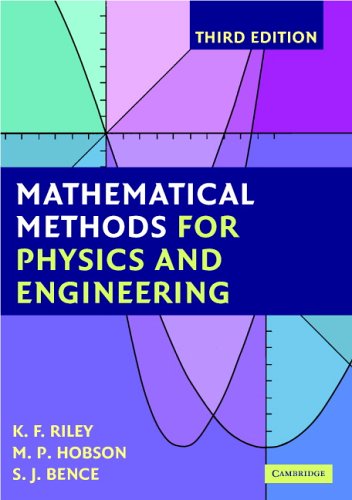
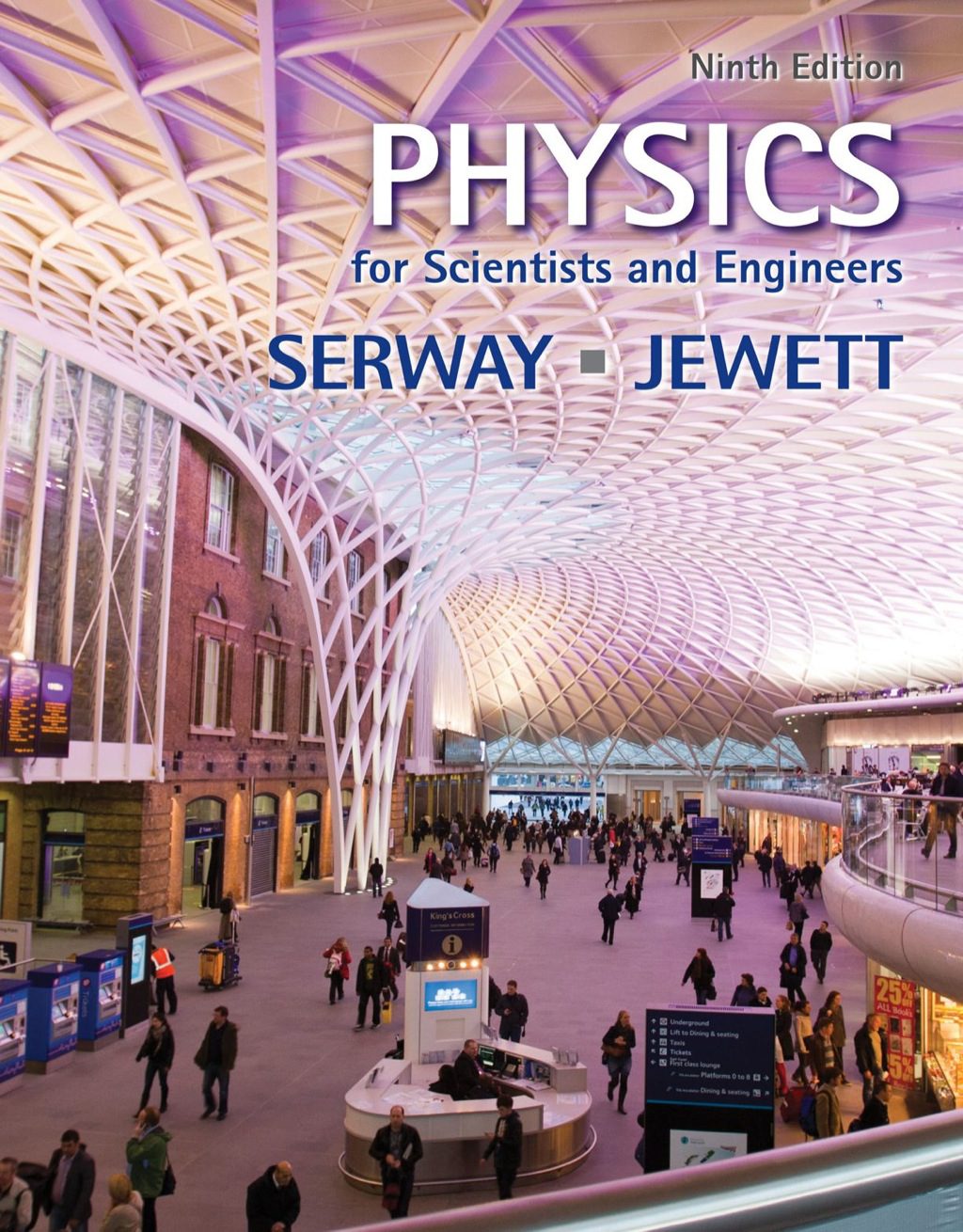
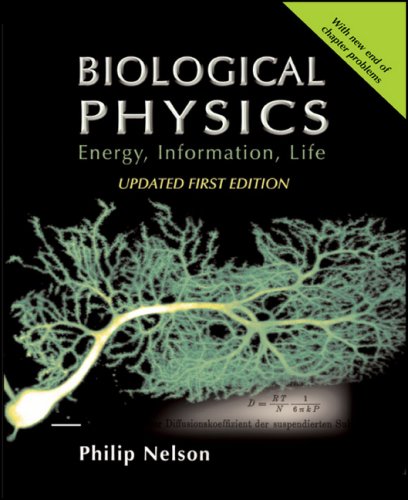
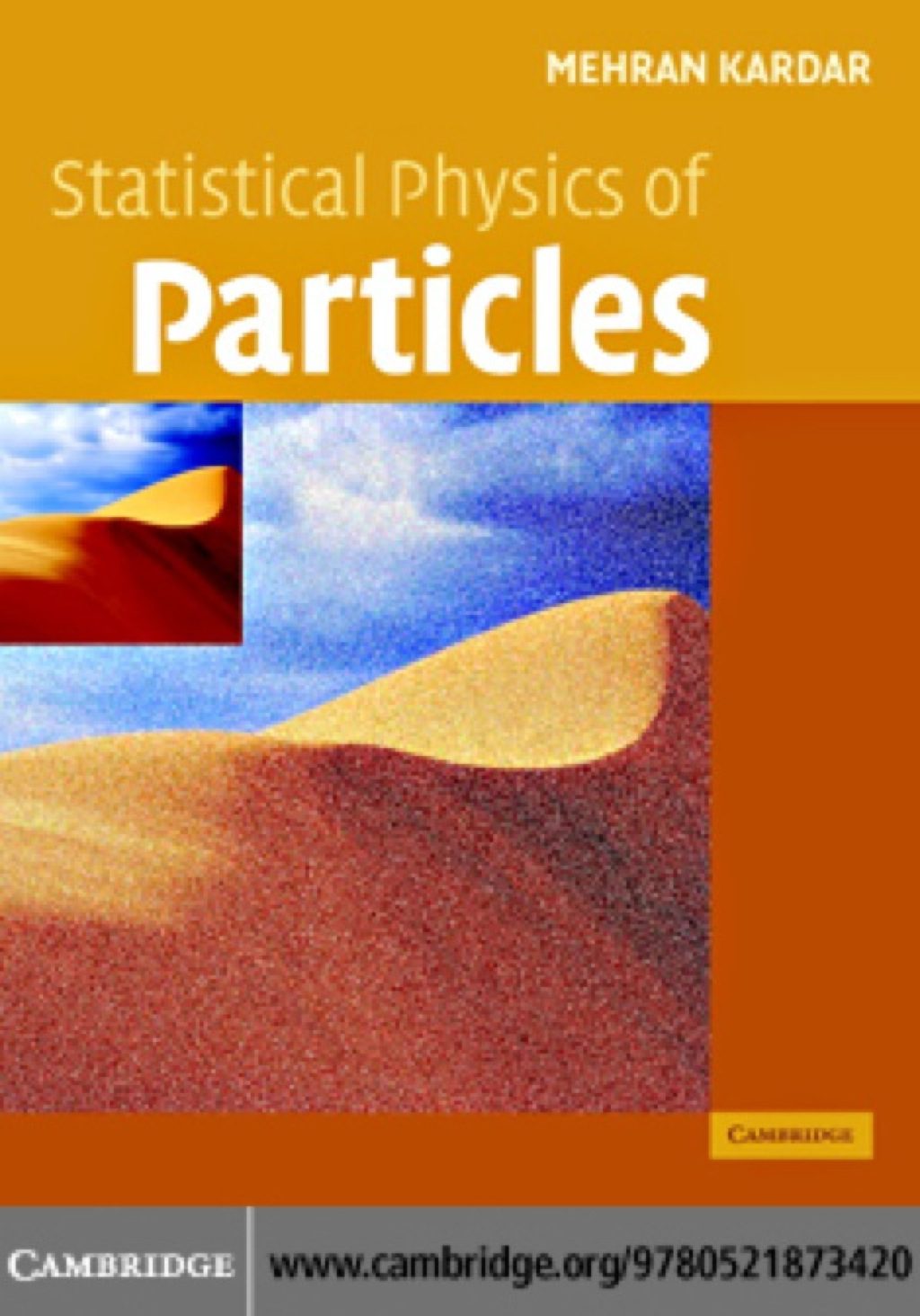
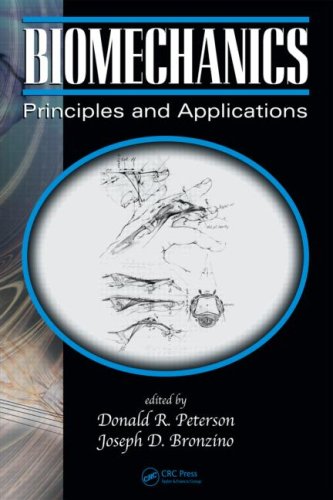

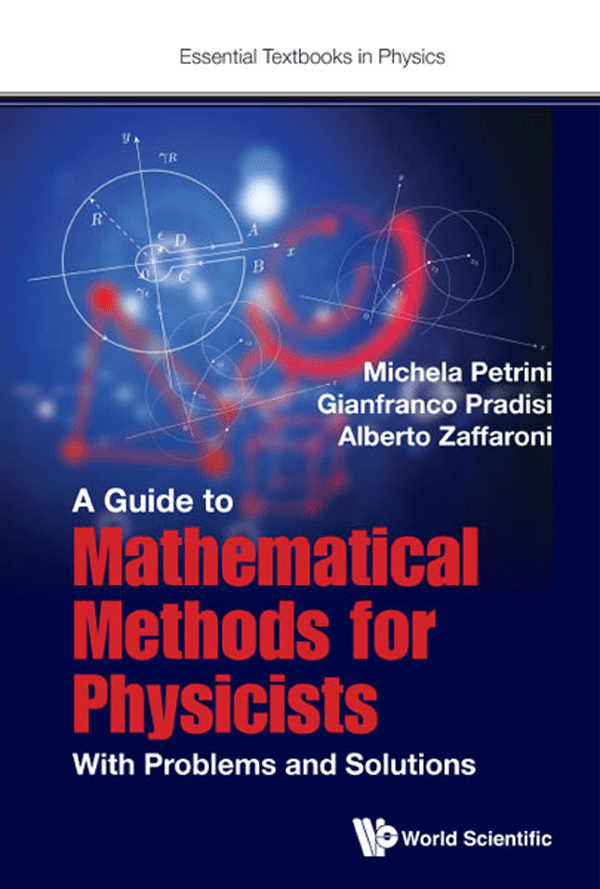
Reviews
There are no reviews yet.